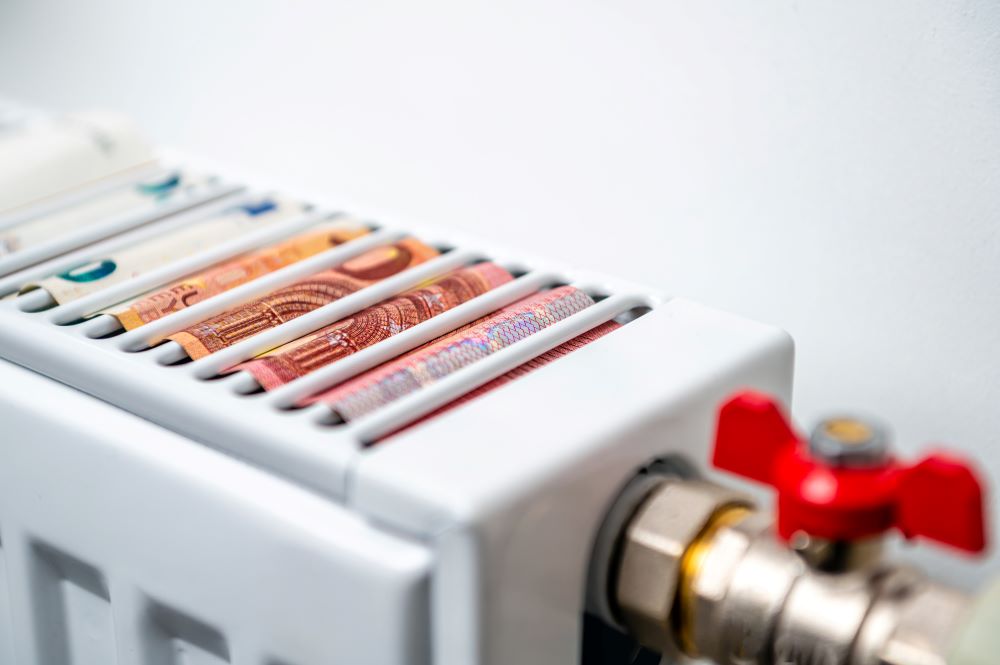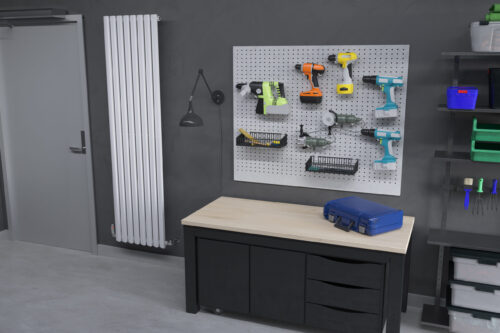
5 Eco-Friendly Alternative Heating Methods for Your Home
Alternative heating methods for homes across the UK are, as you’d expect, a trending topic. With global warming and environmental impacts at the forefront of our minds, eco-friendly heating solutions are helping homeowners to lower their sky-high energy costs and reduce their household’s carbon footprint.
With this growing emphasis on adopting sustainable practices, this guide from UK Radiators aims to explore a range of alternative, renewable heating systems.
So, let’s get into it. Here are five alternative heating methods for your home.
-
Solar Heating Systems Powered by Sunlight
Solar thermal systems use the sun's energy to heat water in a collector. This heated fluid is circulated to spread warmth throughout a building or a water heating system. This would function as an alternative heating method for homes in a similar manner to central heating radiators.
Solar photovoltaic systems generate electricity from sunlight, which can power electric heating systems or be used to supplement conventional heating methods like generators or batteries - this could contribute towards powering modern electric radiators for example.
Both technologies offer a way to reduce your reliance on typical forms of space and water heating like gas boilers and lower your carbon emissions in your pursuit of energy-efficient alternative heating and sustainability.
-
Hydronic Heating: Water-Based Heating Systems
Hydronic radiant heating uses pipes or tubes installed beneath the floor to circulate warm fluid through the system. This 'radiant heat' is then emitted through the pipes to warm large surfaces like walls or floors, creating a consistent warmth across the living space.
Hydronic radiant heating offers several advantages…
It generates consistent heat throughout the home across larger surfaces. However, just like how you can use Radiator Valves to manually alter your central heating radiators between rooms, the radiant heating system allows a zoning capability so you can regulate the temperature in specific areas of the house too.
For example, this could be an alternative heating method to a Bathroom Radiator, using hydronic radiant heat to warm up chilly bathroom tiles and a warm surface to step out onto after a shower during the cooler months.
This targeted heating reduces the need to heat the entire home uniformly, resulting in energy savings by focusing warmth where it’s needed.
Hydronic radiant heating is also compatible with the solar thermal collectors mentioned above, allowing you to integrate different sustainable energy solutions with eco-friendly heating and a cost-effective heating system.
-
Air Source Heat Pumps That Draw Heat from the Air
An air source heat pump, also known as an air-to-water source heat pump, transfers heat from the outside air to water using a unit placed outside of the home. As the liquid is processed, its temperature increases before being pumped into the home through pipes.
According to the Energy Saving Trust, air source heat pumps are more efficient than a gas boiler for heating because they generate more energy for the home than they take to run while producing lower carbon emissions.
Even better, air source heat pumps are effective all year round, capable of producing hot water and warmth in temperatures as low as -15 degrees, which can comfortably accommodate the typical British winter season.
-
Ground Source Heat Pumps That Draw Heat from the Earth
A ground source heat pump functions in a similar manner to an air source heat pump. However, it uses pipes buried in your garden to extract heat from the ground. Temperatures this deep underground tend to be consistent all year round, generating consistent heating results regardless of the season.
This can provide space heating via radiators or underfloor heating systems, and water heating for water stored in a hot water cylinder.
-
Biomass Heating Turning the Old into New
Biomass heating systems burn wood, plants, organic matter and household waste as a renewable energy source. While they do emit carbon dioxide when burned, biomass releases considerably less than fossil fuels and gas boilers. As for concerns about carbon emissions and green heating, the Energy Saving Trust observes that the carbon emissions produced by burning are offset by the absorption of CO2 during the plant's lifetime.
There are some concerns about local air quality due to wood burning. However, proper installation, dry wood fuel usage, and regular maintenance can lessen these problems. Sustainability is a key concern of UK Radiators, and we want you to be able to stay comfortable all year round while having the least impact on your wallet, your surroundings, and the broader environment.
For biomass boilers, an automatically fed pellet boiler for an average home costs around £18,000, including installation. If you currently have a modern condensing gas boiler, a biomass boiler is likely to cost you more to run than your current system. Savings in carbon dioxide emissions are at their most significant – up to 12 tonnes a year - if you're replacing a solid coal-fired system with a biomass boiler.
Being more ecologically friendly with your heating at home and gas boiler alternatives goes hand in hand with its efficiency.
Efficiency can also help you save money.
See our guides below on how to minimise your costs and save energy to get the most out of your heating system, live comfortably, and make savings wherever you can:
Stay Warm and Informed All Year Round with UK Radiators
At UK Radiators, we can provide you with guidance regarding sustainable heating in your home to help you minimise your carbon footprint, save money and live more comfortably.
Give us a call on 0333 006 8227 or send your enquiry to sales@ukradiators.com and we'll be in touch.










